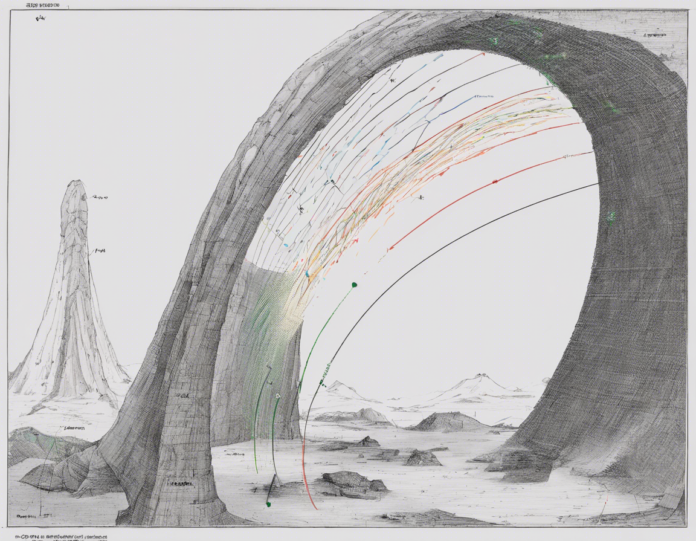Introduction
When an object is launched into the air, its path can be defined by a parabola – a curve with a mirror-symmetrical shape. This phenomenon is most commonly observed in the motion of projectiles such as rockets, baseballs, or even water fountains. Understanding the trajectory of a projectile is essential for a variety of fields including physics, engineering, mathematics, and sports. In this article, we will delve into the intricacies of projectile motion and explore the mathematical principles behind the perfect parabolic path.
Understanding Projectile Motion
Projectile motion occurs when an object is thrown or projected into the air and is subject only to the force of gravity and air resistance (if applicable). The two main components of projectile motion are the horizontal and vertical motion of the object. The horizontal motion is typically characterized by a constant velocity, while the vertical motion is influenced by the acceleration due to gravity.
Equations of Motion
To analyze the trajectory of a projectile, we can break down its motion into horizontal and vertical components. The key equations for projectile motion are as follows:
Horizontal Motion:
- The horizontal velocity (Vx) remains constant throughout the motion.
- The horizontal displacement (dx) can be calculated using the formula: dx = Vx * t, where t is the time.
Vertical Motion:
- The vertical velocity (Vy) changes due to the acceleration of gravity (g).
- The vertical displacement (dy) can be determined by the formula: dy = Vy * t - 0.5 * g * t^2.
Maximum Height and Range
The maximum height (H) reached by a projectile can be calculated using the formula: H = Vy^2 / 2g. The time taken to reach the maximum height is given by: t = Vy / g.
The range (R) of a projectile, which is the horizontal distance traveled, can be found using the formula: R = Vx * 2Vy / g.
Velocity Components
The initial velocity of a projectile can be broken down into horizontal (Vx) and vertical (Vy) components using trigonometric functions. If the initial velocity makes an angle θ with the horizontal, then Vx = V * cos(θ) and Vy = V * sin(θ), where V is the magnitude of the initial velocity.
Optimal Angle of Launch
For a given initial velocity, the optimal angle of launch that maximizes the range of the projectile is 45 degrees. This angle ensures that the vertical and horizontal components of velocity are equal, leading to the farthest horizontal distance traveled.
Factors Affecting Projectile Motion
Several factors can influence the trajectory of a projectile:
- Initial Velocity: A higher initial velocity results in a longer range and a higher maximum height.
- Angle of Launch: The angle at which the projectile is launched affects the range and trajectory.
- Air Resistance: Air resistance can alter the path of a projectile, especially at higher velocities.
- Gravity: Changes in gravitational acceleration can impact the motion of a projectile.
Real-World Applications
The principles of projectile motion find applications in various fields:
- Sports: Understanding projectile motion is crucial in sports such as basketball, football, and golf.
- Engineering: Engineers utilize projectile motion calculations in designing structures, vehicles, and ballistic missiles.
- Physics: Projectile motion serves as a fundamental concept in physics education and research.
FAQs
-
What is projectile motion?
Projectile motion is the motion of an object thrown or projected into the air, subject only to the force of gravity and air resistance. -
What is the shape of the trajectory in projectile motion?
The trajectory of a projectile follows a parabolic path due to the combined effects of horizontal and vertical motion. -
How do you calculate the range of a projectile?
The range of a projectile can be calculated using the formula: R = Vx * 2Vy / g, where Vx and Vy are the horizontal and vertical components of velocity, and g is the acceleration due to gravity. -
At which angle should a projectile be launched for maximum range?
The optimal angle of launch for maximum range is 45 degrees, where the horizontal and vertical components of velocity are equal. -
What factors can affect the trajectory of a projectile?
Factors such as initial velocity, angle of launch, air resistance, and gravity can influence the trajectory of a projectile. -
What is the formula for calculating the maximum height of a projectile?
The maximum height (H) of a projectile can be found using the formula: H = Vy^2 / 2g, where Vy is the vertical component of velocity. -
How is the initial velocity of a projectile divided into components?
The initial velocity of a projectile is divided into horizontal and vertical components using trigonometric functions based on the launch angle. -
In what practical scenarios is an understanding of projectile motion important?
Projectile motion concepts are vital in sports, engineering design, physics simulations, and military applications among others. -
Why is the study of projectile motion important?
Understanding projectile motion helps predict the path of objects in motion, optimize performance in sports, and facilitate accurate engineering calculations. -
Can air resistance significantly alter the trajectory of a projectile?
Air resistance can have a noticeable effect on the trajectory of a projectile, particularly at high velocities where drag can slow down the object's motion.
By grasping the principles of projectile motion and the perfect parabolic path, we can unravel the secrets behind the graceful arcs traced by objects in flight. Whether in the realm of science or sports, the study of projectiles enriches our understanding of motion and opens doors to a world of calculated precision.
